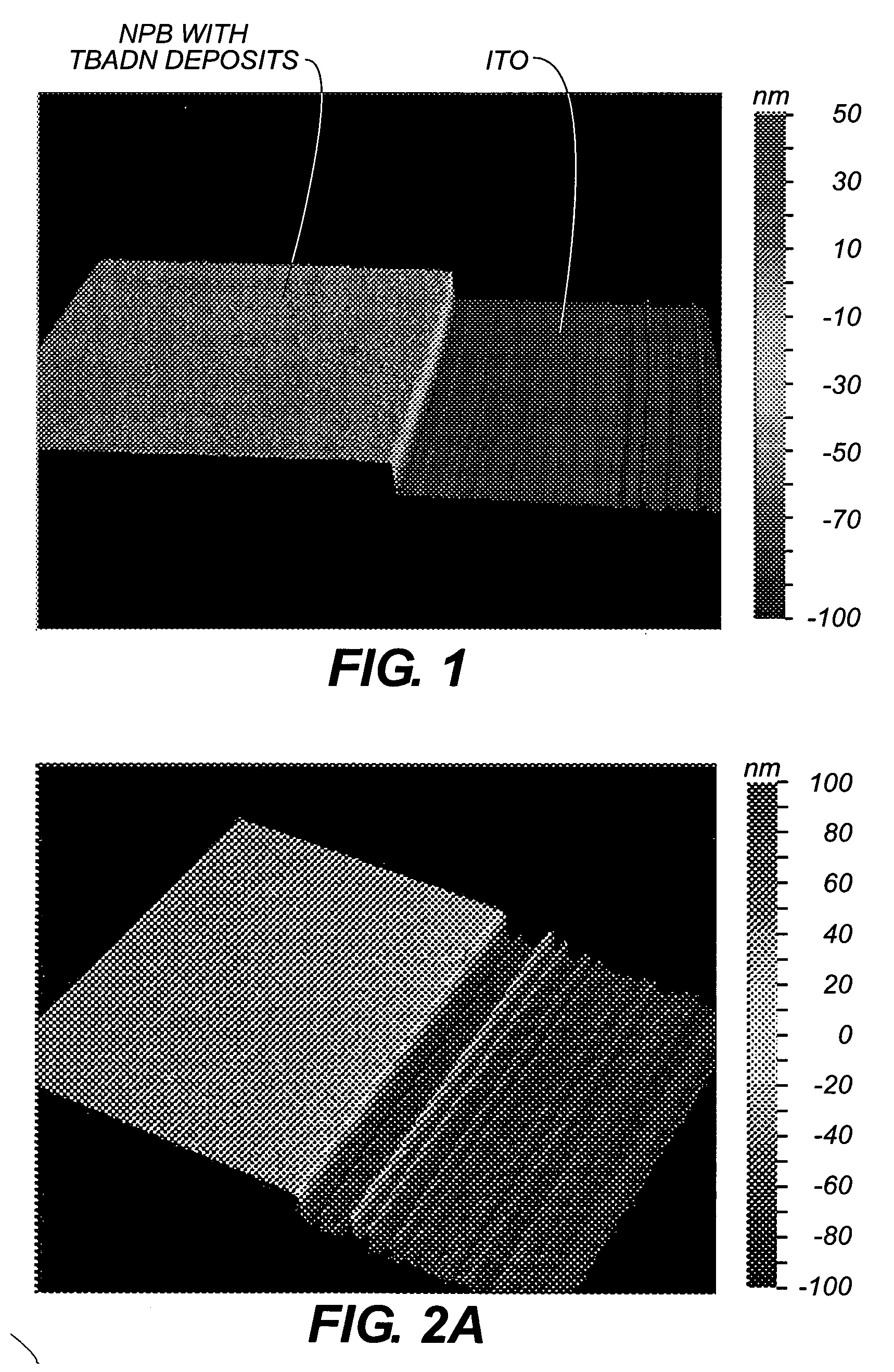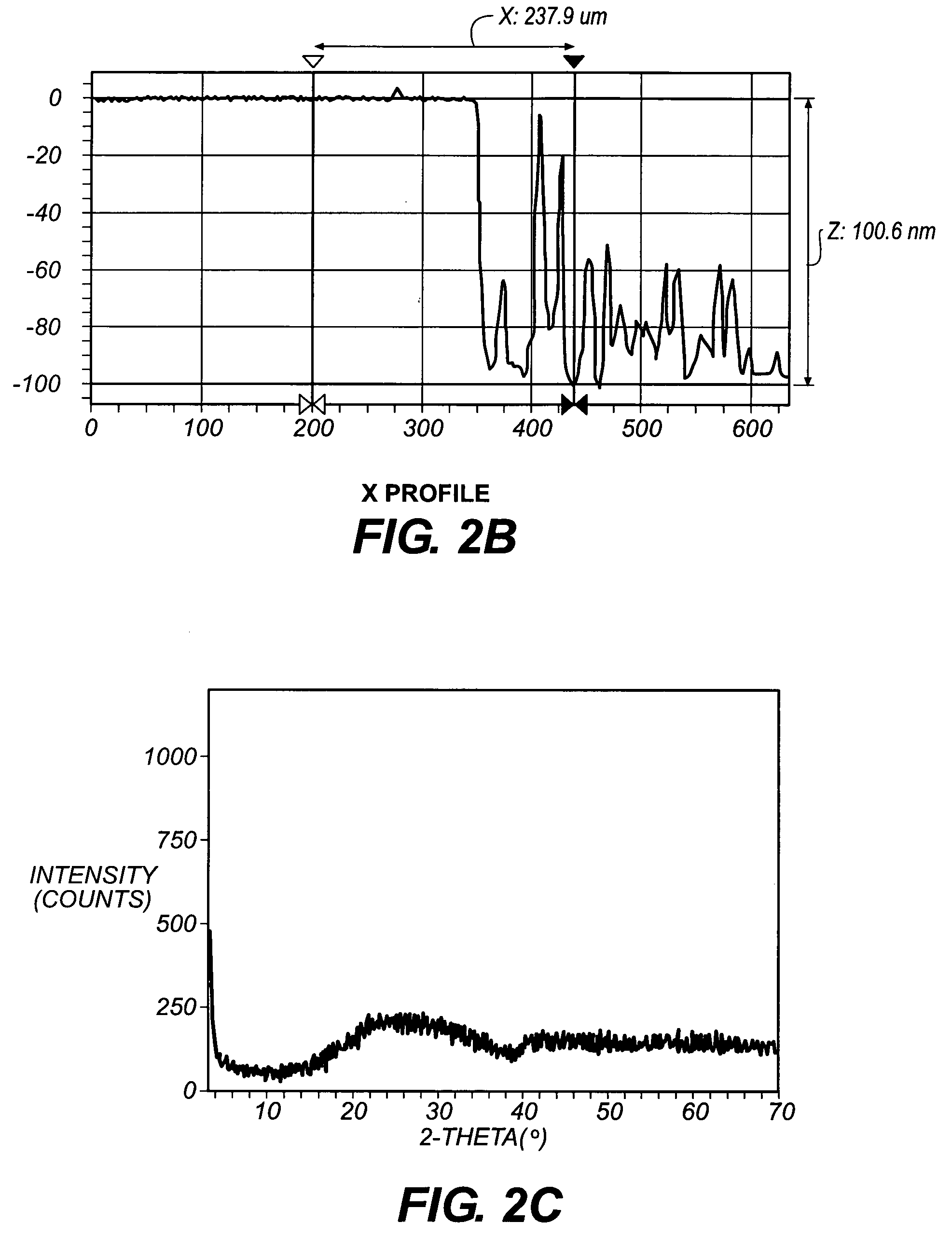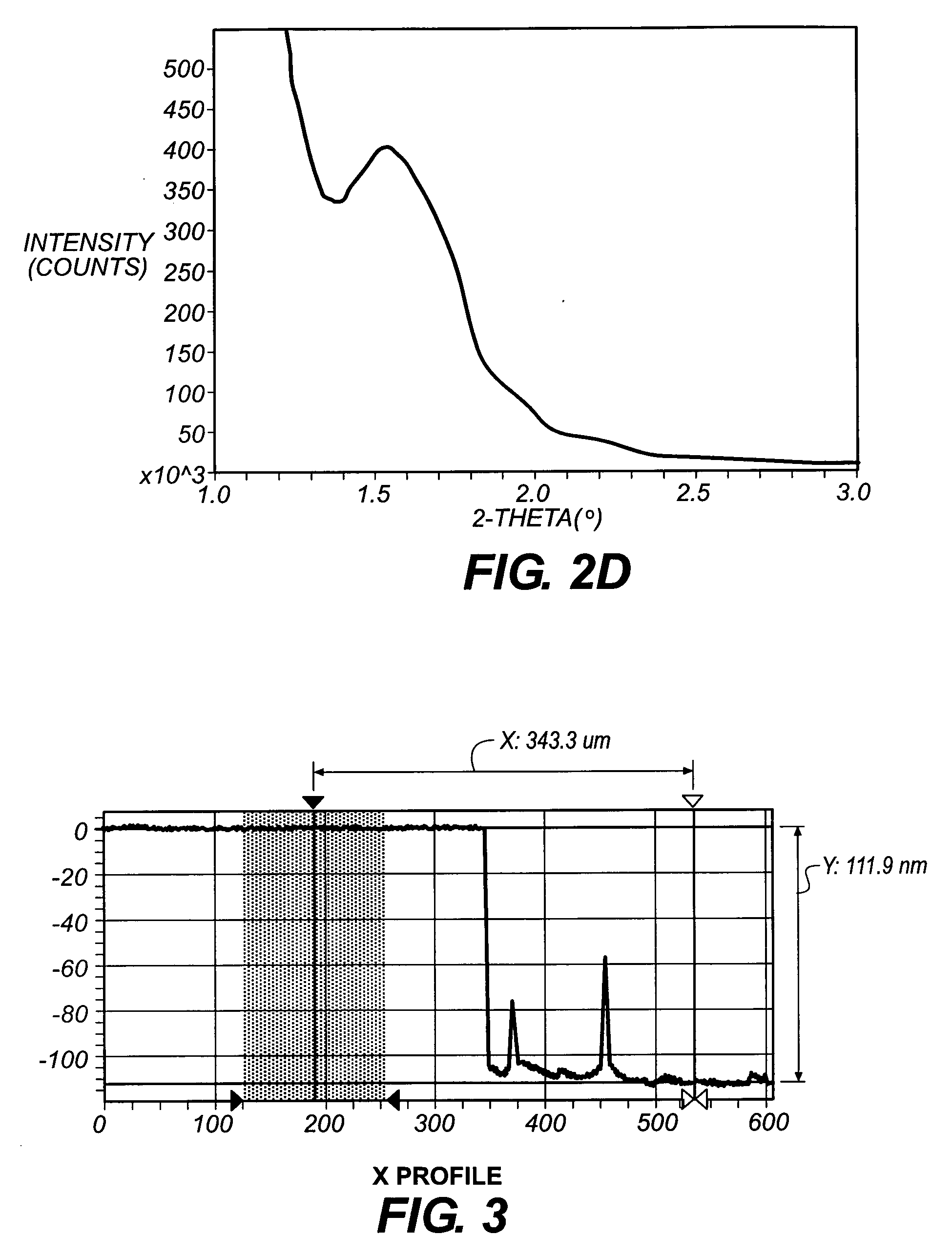Deposition of uniform layer of desired material
a technology of desired material and uniform layer, applied in the direction of vacuum evaporation coating, solid-state device, coating, etc., can solve the problems of limited control of the nanostructural details of the coating, limited to metal, ceramics, and their composites, and general unsuitability for direct use in conventional thermal spray coating processes. achieve the effect of high speed, accurate and uniform deposition of a functional material, and high speed, accurate and precise coating of a receiver
- Summary
- Abstract
- Description
- Claims
- Application Information
AI Technical Summary
Benefits of technology
Problems solved by technology
Method used
Image
Examples
example 1
Control
[0054] A SAS type particle generation process of the type disclosed in copending, commonly assigned U.S. Ser. No. 10 / 814,354 (Docket 86430) was employed to generate a desired gaseous flow stream. A nominally 1800 ml stainless steel particle formation vessel was fitted with a 4 cm diameter agitator of the type disclosed in U.S. Pat. No. 6,422,736, comprising a draft tube and bottom and top impellers. CO2 was added to the particle formation vessel while adjusting temperature to 90 C and pressure to 300 Bar and while stirring at 2775 revolutions per minute. The addition of CO2 at 60 g / min through a feed port that had a 200 μM orifice at its tip, and a 0.1 wt % solution of Tert-Butyl-anthracene di-naphthylene (TBADN: a functional material used in Organic Light Emitting Diodes) in acetone at 3 g / min, through a 100 μm tip, was then commenced and the process was allowed reach a steady state. The CO2 and solution feed ports were located close to the bottom impeller as disclosed for ...
example 2
Invention
[0057] The procedure employed in Example 1 was repeated, except that the heat exchanger was powered such that the temperature of the gaseous flow exiting the slot under ambient pressure was 193 C, above the Tg of the generated TBADN particles. The resultant coating was then subjected to various characterization methods to elucidate its features. First, an edge was created carefully on the deposition surface. The coating was then coated with 2 nm thick gold film under vacuum and examined by Vertical Scanning Interferometry with a non-contact optical profilometer (WYCO NT1000 from Veeco Instruments) at a surface magnification of 10×. FIG. 2(A) shows the 3-dimensional display of the sample surface. The lower level of the signal corresponds to the ITO film surface. The higher level corresponds to the NPB layer and thin, continuous deposits of TBADN on its surface. FIG. 2(B) shows the instrument signal near the carefully created edge on the deposition surface. The lower level o...
example 3
Invention
[0058] The procedure employed in Example 2 was repeated, except that the temperature of the flow at the coating slot was maintained at 222 degree C. and the substrate was passed 360 times under the coating slot. The resulting coating on the glass slide was also similarly examined by interferometry. After subtracting the thickness of underlaying NPB layer (84 nm), the TBADN film thickness was estimated to be 28 nm from FIG. 3. The surface roughness was 0.34 nm.
PUM
| Property | Measurement | Unit |
|---|---|---|
| volume-weighted mean particle diameter | aaaaa | aaaaa |
| volume-weighted average diameter | aaaaa | aaaaa |
| volume-weighted average diameter | aaaaa | aaaaa |
Abstract
Description
Claims
Application Information
 Login to View More
Login to View More - R&D
- Intellectual Property
- Life Sciences
- Materials
- Tech Scout
- Unparalleled Data Quality
- Higher Quality Content
- 60% Fewer Hallucinations
Browse by: Latest US Patents, China's latest patents, Technical Efficacy Thesaurus, Application Domain, Technology Topic, Popular Technical Reports.
© 2025 PatSnap. All rights reserved.Legal|Privacy policy|Modern Slavery Act Transparency Statement|Sitemap|About US| Contact US: help@patsnap.com



